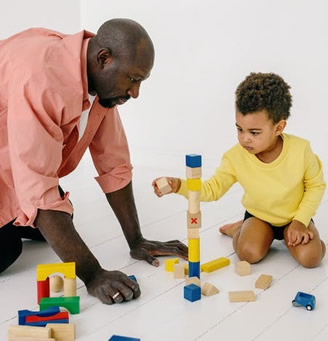Cognitive and Communication Milestones
As children develop, they progress through predictable, sequential stages, hitting key milestones along the way. Knowing which milestones an individual has acquired helps to understand how they problem solve, reason, and make sense of their surroundings.
Given the nature of disabilities that impact development, individuals with developmental disabilities do not acquire and use their developmental abilities in the same way as their same age peers. Their developmental trajectory may be slower in pace and do not always move through these stages neatly so it can be disordered in progression. They may present with an even profile of skills that are significantly reduced for their chronological age, demonstrate a scatter of skills across multiple stages and/or have “splinter skills” that are in stages higher than their most reliable level of functioning.
Splinter skills can and should be used when programming; however, it is important to keep in mind that they do not reflect a student’s overall level of functioning. As such, while they may support the development of some rote skills, they are often only displayed under specific conditions and therefore are not reliable. For this reason, educational programming should center on building skills within a student’s overall developmental level rather than skills, sporadically displayed from higher levels of development.

Developmental Stages
- Pre-Symbolic (Infancy to 2 years)
- Pre-Academic (2 to 4 years)
- Early Academic (4 to 7 years)
- Traditional Academic (7+ years)


